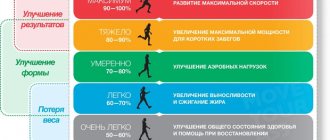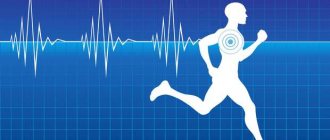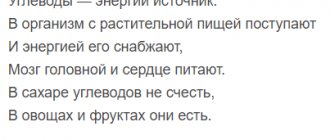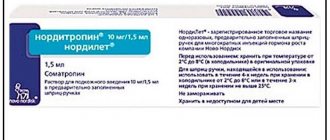Do you think that if two people run the same distance in the same time, they will have the same workout? A beginner will most likely say yes, an experienced athlete will firmly answer no.
What secret of intensity does a professional track and field athlete know?
In fact, we all carry the load differently, taking into account the level of physical fitness, age, weather conditions, route, and health status. But what about a training plan that includes intense, light, and speed workouts?
Pulse zones will help you correctly calculate your load level. This is the heart rate range, which indirectly demonstrates how the body copes with the load, what energy production mechanism is used.
It is thanks to pulse zones that you can create an individual, competent training plan. To determine them, you need to know your heart rate. Which one? Let's discuss.
How to determine your pulse
In a healthy person, pulse = heart rate. Please note that the numerical value of the pulse constantly changes during the day. What indicator will help us determine pulse zones when running?
Resting pulse
The resting pulse shows how “trained” the heart is, and whether the body has managed to fully recover after the load.
“Peace” is a relative concept: you can calmly sit on the couch and watch TV, eat, or stand in the middle of the park. But you should not estimate your resting heart rate at such moments.
You can determine your resting pulse only in the morning after waking up, when the person has not yet gotten out of bed. Then the indicator is as accurate as possible.
However, resting heart rate is not suitable for calculating heart rate zones. As mentioned earlier, this is a variable quantity. Morning heart rate can decrease with regular training, and increase with overtraining or lack of sleep.
Target heart rate
Running through pulse zones is carried out to develop a specific indicator: endurance, speed, MOC (maximum oxygen consumption), PANO.
The target heart rate is exactly the indicator that will form the corridors of pulse zones. We will determine it directly during training.
Download training plans to prepare for the marathon and half marathon.
Start preparing right now!
The old fashioned methods: placing your fingers on the carotid artery/wrist , counting the pulse for 10 seconds, then multiplying by 6 will not work. It is almost impossible to implement them while jogging.
It is better to use a hand-held or chest heart rate monitor, smart watch, or fitness bracelet. The most accurate would be a chest heart rate monitor. These gadgets will show which heart rate zone corresponds to the workout: whether you need to slow down/increase the pace.
MChSS
This is exactly the indicator that you will need to calculate your heart rate zones during training. The maximum heart rate (MHR), a relatively stable value that depends on age, decreases by approximately 1 beat per year.
Therefore, calculating the target heart rate from this value is the most convenient. There are many ways to determine this indicator.
Laboratory determination
The most accurate method to find out your maximum heart rate is a treadmill test. It is performed on a treadmill. Other options are using bicycle ergometry and special physical exercises.
The sports doctor gradually increases the speed of movement + the intensity of the load (increases the angle of inclination/resistance of the pedals). At the same time, heart and breathing parameters are constantly recorded, and a graph is formed. After reaching the maximum lower heart rate, the load is reduced. Also during the test, blood is taken to determine the lactate threshold.
Self-determination
If you do not have the opportunity to calculate the MHR using a laboratory method, but it is important for you to determine the pulse zones, use the formulas:
1) 220 - age
For example , for a 30-year-old person, MHR: 220 - 30 = 190 beats/min. This formula has significant errors;
2) 214 – (0.8 x age) for men
209 – (0.9 x age) for women
For example , for a 35-year-old woman, MHR: 209 - (0.9 x 35) = 178 beats/min. This formula is more accurate;
3) 205.8 - (0.685 x age)
For example , for a 40-year-old person, MHR: 205.8 - (0.685 x 40) = 178 beats/min. This is a refined Roberges-Landwehr formula.
There are also several practical ways:
- During training, run 1 mile as fast as possible, especially in the last few meters before the finish line. Then simply measure your MHR.
- Run 2 x 800m segments with 5m slow jogging. At the end of each 800 m segment, accelerate as much as possible. Then look at your MHR indicator on the clock.
Now that we know all about how to calculate different heart rate indicators, let's learn how to determine heart rate zones during training.
Pulse zones. How to determine and which one is better to train in?
Beginners often exaggerate their capabilities and try to run faster and faster each time, without focusing on their heart rate (HR). This has a bad effect on cardiac endurance and can provoke diseases. Today we’ll talk about how to control your heart rate during training.
So, without going too deep into physiology, we’ll tell you. The body requires oxygen to release energy. If there is a lack of it, lactic acid (lactate) accumulates in the muscles, which makes it difficult for them to work. The pulse is an indicator of the level of exertion at which oxygen ceases to be available. When this happens, you lose your breath and lose the ability to speak calmly.
How to determine your maximum heart rate
When it is not possible to do testing on a treadmill, we turn to formulas for calculating heart rate zones, using the values of the maximum heart rate and the percentage of each zone relative to the athlete’s individual heart rate.
We calculate the maximum heart rate using the refined Roberges-Landwehr formula: HRmax = 205.8 - (0.685 * age). For example, if you are 30 years old, then your maximum heart rate will be around 185 beats per minute. However, HRmax can vary greatly among athletes of different fitness levels, and this method is not always the best way to determine maximum heart rate.
The most effective and correct method for determining your maximum heart rate and your personal heart rate zones is stress testing on a treadmill in a specialized sports clinic. We recommend doing this test at least once a year, at the beginning of the preparatory period. This will allow you to more accurately build individual training plans for preparing for a marathon (half marathon). Remember that there are no clean zones; the pulse only shows the DOMINANCE of one energy production process over another.
In training our athletes, we use 5 pulse zones:
T1. Light aerobic - warm-up/cool-down (60-75% of heart ratemax)
The first zone corresponds to low intensity, most suitable for recovery after high-intensity or long-term training. Also suitable for warming up, cooling down and active recovery between high intensity intervals.
T2. Moderate aerobic - recovery cross-country (75-84% of heart ratemax)
Training in the second zone develops the cardiovascular system and improves the ability of muscles to utilize fat. Large volumes of training in the second zone can improve the efficiency of movements and increase endurance.
Most athletes are able to “learn” a lot of training in the second zone. Before and after training in the 2nd zone, it is recommended to warm up and cool down in the 1st zone. Studies have shown that without feedback during training, most athletes go just above the second zone. This is ineffective because loads in the third zone are significantly heavier for the nervous system, and the achieved training effect differs slightly from work in the second zone. If you regularly train in the 3rd zone instead of the 2nd, then there is a high probability of accumulating significant chronic fatigue and developing a state of overtraining.
T3. Mixed - long and developing crosses (82-89% of HRmax)
The third zone corresponds to moderate intensity and is located between the respiratory threshold (the intensity at which breathing increases) and the lactate threshold. Training in this zone is more relevant for athletes specializing in long distances (from 10 km to the marathon), as they correspond to competitive speeds. Although recently there has been more and more evidence and recommendations for trained athletes to give preference to training in the second zone.
T4. Threshold: tempo run, long intervals (88-94% of HRmax)
The fourth zone is a narrow zone ending at the MPC level. This level corresponds to the intensity at which the athlete consumes the maximum possible amount of oxygen. On average, a trained athlete is able to stay in this zone for several minutes. Typically, zone 4 is used during interval training, where several short zone 4 jobs are separated by short, low-intensity recovery intervals. In this zone, the athlete runs distances from 800 to 3000m.
T5. Maximum: intervals, accelerations (92-100% of HRmax)
The fifth zone starts from the manual gearbox level and continues up to sprint intensity. Training in this zone increases anaerobic efficiency, i.e. the body’s ability to use anaerobic energy supply mechanisms, increasing lactate tolerance. As with zone 4, zone 5 is commonly used during interval training.
For convenience, we have put together a heart rate zone calculator.
What does science say?
Research has shown that the most effective results are achieved by athletes who perform approximately 80% of their training in zones 1 and 2, and the remaining 20% in zones 3-5. Do not forget that the intensity of the load is a relative value. A load that may correspond to the first zones for one athlete may be close to the upper zones for another athlete. Therefore, to optimize the training process, it is necessary to determine your individual training zones.
Why train your heart?
Here's an interesting fact for you. Athletes' heart rate at rest is lower than that of non-athletes. This is due to the fitness of their cardiovascular system and regular changes in heart rate during exercise. Accordingly, a professional’s heart works more efficiently at rest than that of an ordinary person.
Regular moderate exercise can increase the efficiency of the heart muscle, and therefore reduce heart rate at rest.
Sign up for classes at the Academy and get answers to all your questions about running, including heart rate zones. Running club "Marathon Academy" - we have been inspiring runners since 2016. We share our experience with beginners and advanced amateurs, preparing for distances from 1 kilometer to ultramarathon. We convey a mindful approach to running











